Best Bitcoin and Crypto Exchanges in California in 2024
Best Crypto Exchanges in California in 2024
Our team has reviewed several crypto exchanges in California and compiled for you a list of the 10 best crypto & Bitcoin exchanges in California.
- Coinbase – Best for Beginners: Coinbase is a well-established and renowned brand that offers a user-friendly interface and an easy purchase process. It is a great option for those new to cryptocurrency trading.
- Kraken – Best for Security: Kraken is known for its strong security measures, making it a reliable choice for those concerned about the safety of their funds.
- Binance – Best for Advanced Trading: Binance is a popular exchange that offers a wide range of advanced trading options, making it suitable for experienced traders.
- Gemini – Best for Regulatory Compliance: Gemini is a regulated exchange that prioritizes compliance with regulatory standards, making it a trustworthy option for users who value regulatory oversight.
- eToro – Best for Social Trading: eToro is a unique platform that allows users to copy the trades of successful traders, making it a good choice for those interested in social trading.
- Bitstamp – Best for Low Fees: Bitstamp offers competitive fees, making it an attractive option for users looking to minimize their trading costs.
- Gate.io – Best for Altcoin Trading: Gate.io is known for its wide selection of altcoins, making it a suitable exchange for users interested in trading alternative cryptocurrencies.
- OKX – Best for Futures Trading: OKX is a popular exchange that specializes in futures trading, making it a good choice for users interested in trading cryptocurrency derivatives.
- CoinDCX – Best for Indian Users: CoinDCX is a leading exchange in India and offers a range of services tailored to the needs of Indian users.
- Crypto.com – Best for Altcoins: Crypto.com allows users to buy and sell over 250 cryptocurrencies with high liquidity, making it a great option for those interested in trading a wide variety of altcoins.
Review of Our Top 10 Crypto Exchanges
These are some of the reviews of our 10 BTC and Crypto exchanges.
1. Coinbase Exchange Review

Overview: Coinbase was founded in 2012 and is headquartered in San Francisco, California. It is a centralized exchange that allows users to buy, sell, and trade cryptocurrencies.
Tradable coins: Coinbase offers trading for over 50 cryptocurrencies, including Bitcoin, Ethereum, and Litecoin.
Fees: Coinbase charges a spread of about 0.50% for cryptocurrency purchases and sales. Additionally, it charges a Coinbase Fee, which is based on the payment method used and ranges from $0.99 to 3.99%. Coinbase Pro, the exchange’s advanced trading platform, charges fees ranging from 0.05% to 0.50%.
Pros:
- User-friendly interface
- High liquidity
- Wide range of supported cryptocurrencies
Cons:
- High fees compared to some competitors
- Limited payment options
Visit Coinbase
2. Kraken Exchange Review
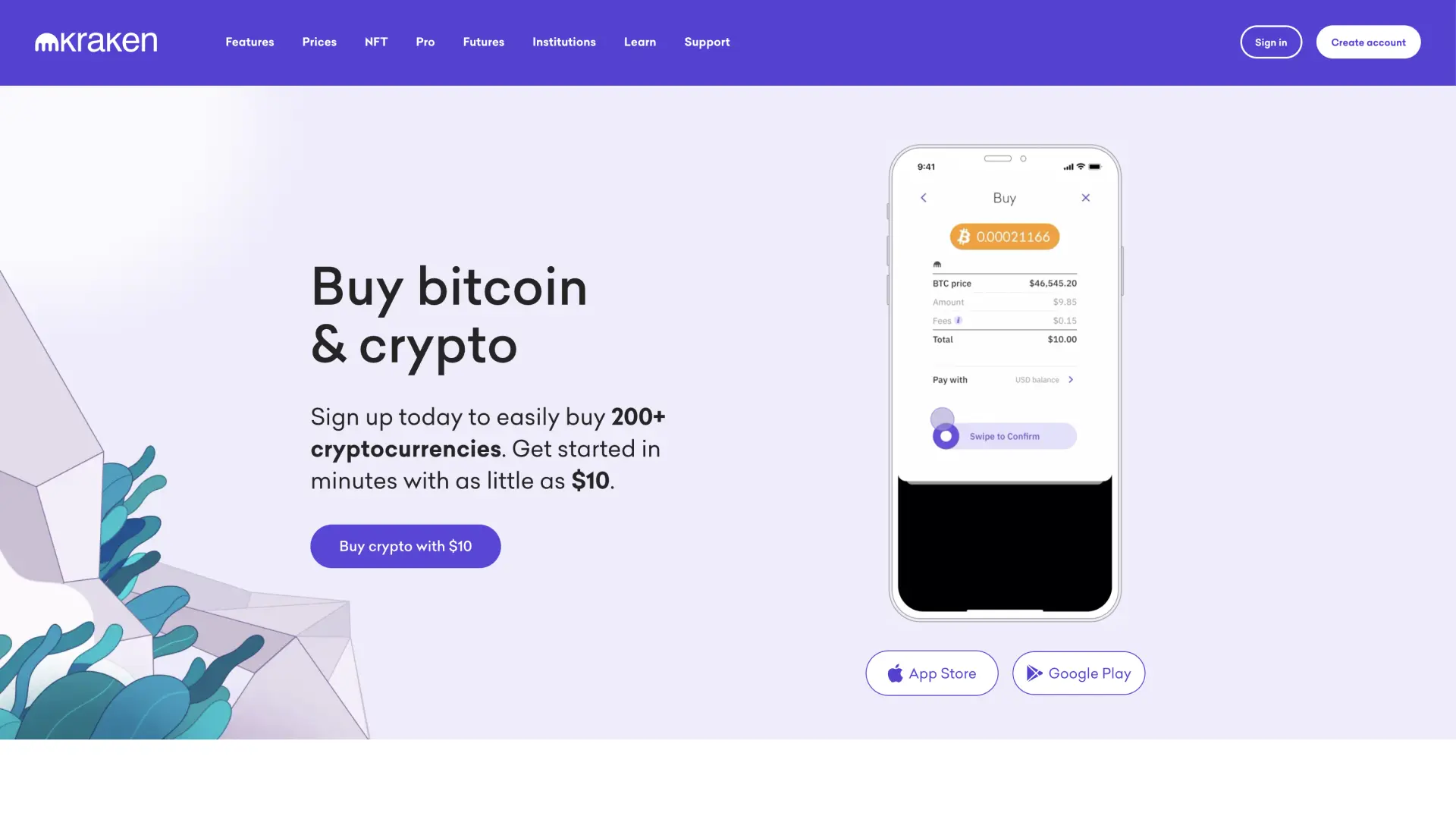
Overview: Kraken was founded in 2011 and is headquartered in San Francisco, California. It is a centralized exchange that offers trading for a wide range of cryptocurrencies.
Tradable coins: Kraken offers trading for over 70 cryptocurrencies, including Bitcoin, Ethereum, and Ripple.
Fees: Kraken’s fees vary depending on the trading volume and currency pair. The fees range from 0% to 0.26% for makers and 0.10% to 0.26% for takers.
Pros:
- Strong security measures
- Wide range of supported cryptocurrencies
- Low fees for high-volume traders
Cons:
- Slow customer support
- Limited payment options
Visit Kraken
3. Binance Exchange Review

Overview: Binance was founded in 2017 and is headquartered in Malta. It is a centralized exchange that offers trading for a wide range of cryptocurrencies.
Tradable coins: Binance offers trading for over 500 cryptocurrencies, including Bitcoin, Ethereum, and Binance Coin.
Fees: Binance’s fees vary depending on the trading volume and currency pair. The fees range from 0.02% to 0.10% for makers and 0.04% to 0.10% for takers.
Pros:
- Wide range of supported cryptocurrencies
- Advanced trading options
- Low fees
Cons:
- Limited payment options
- Not available in all states in the US
Visit Binance
4. Gemini Exchange Review
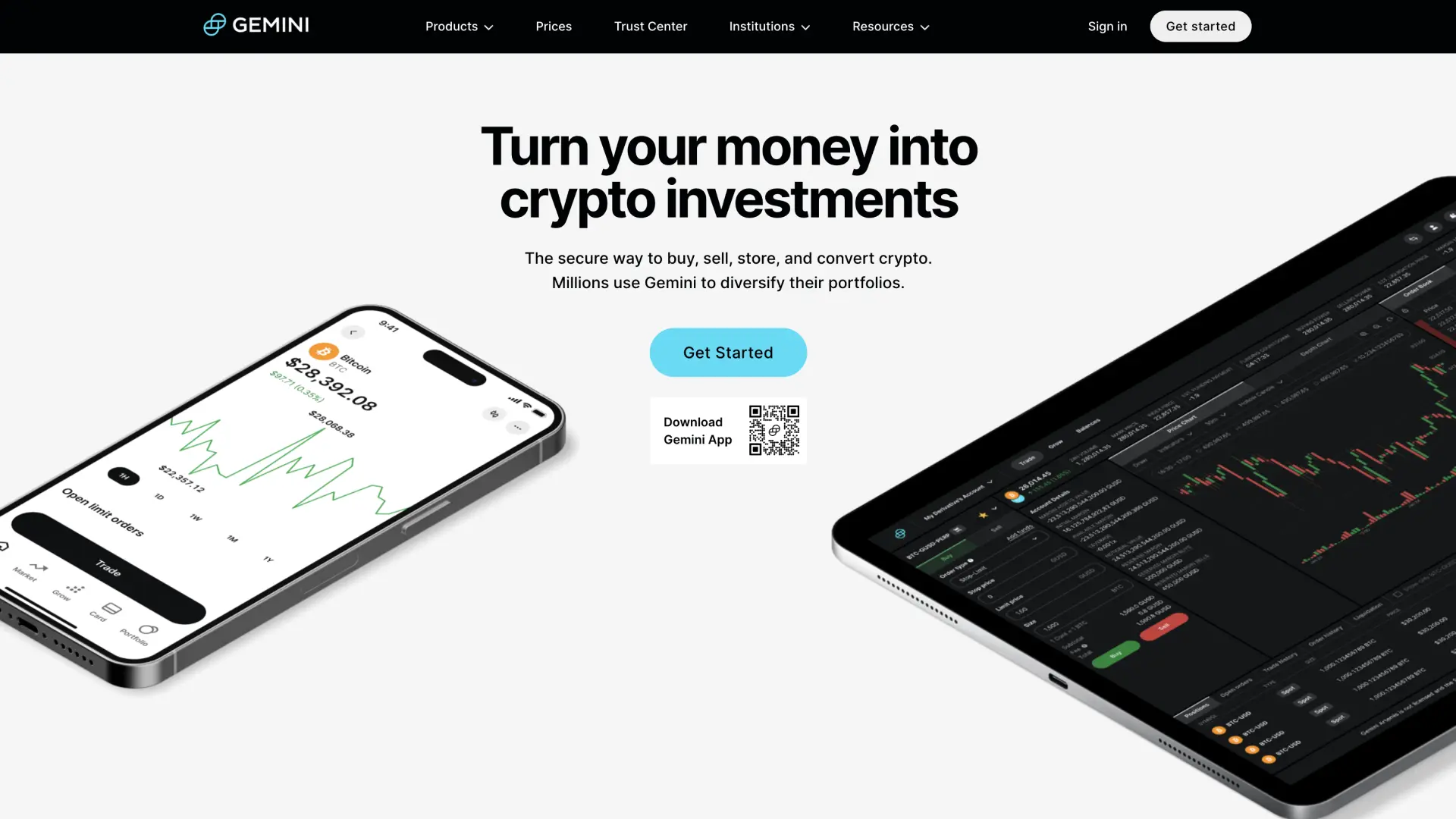
Overview: Gemini was founded in 2014 and is headquartered in New York City. It is a centralized exchange that offers trading for a limited number of cryptocurrencies.
Tradable coins: Gemini offers trading for 33 cryptocurrencies, including Bitcoin, Ethereum, and Litecoin.
Fees: Gemini charges a flat fee of 0.50% for both buyers and sellers.
Pros:
- Regulated exchange
- Strong security measures
- Low fees for small transactions
Cons:
- A limited number of supported cryptocurrencies
- High fees for large transactions
Visit Gemini
5. eToro Exchange Review
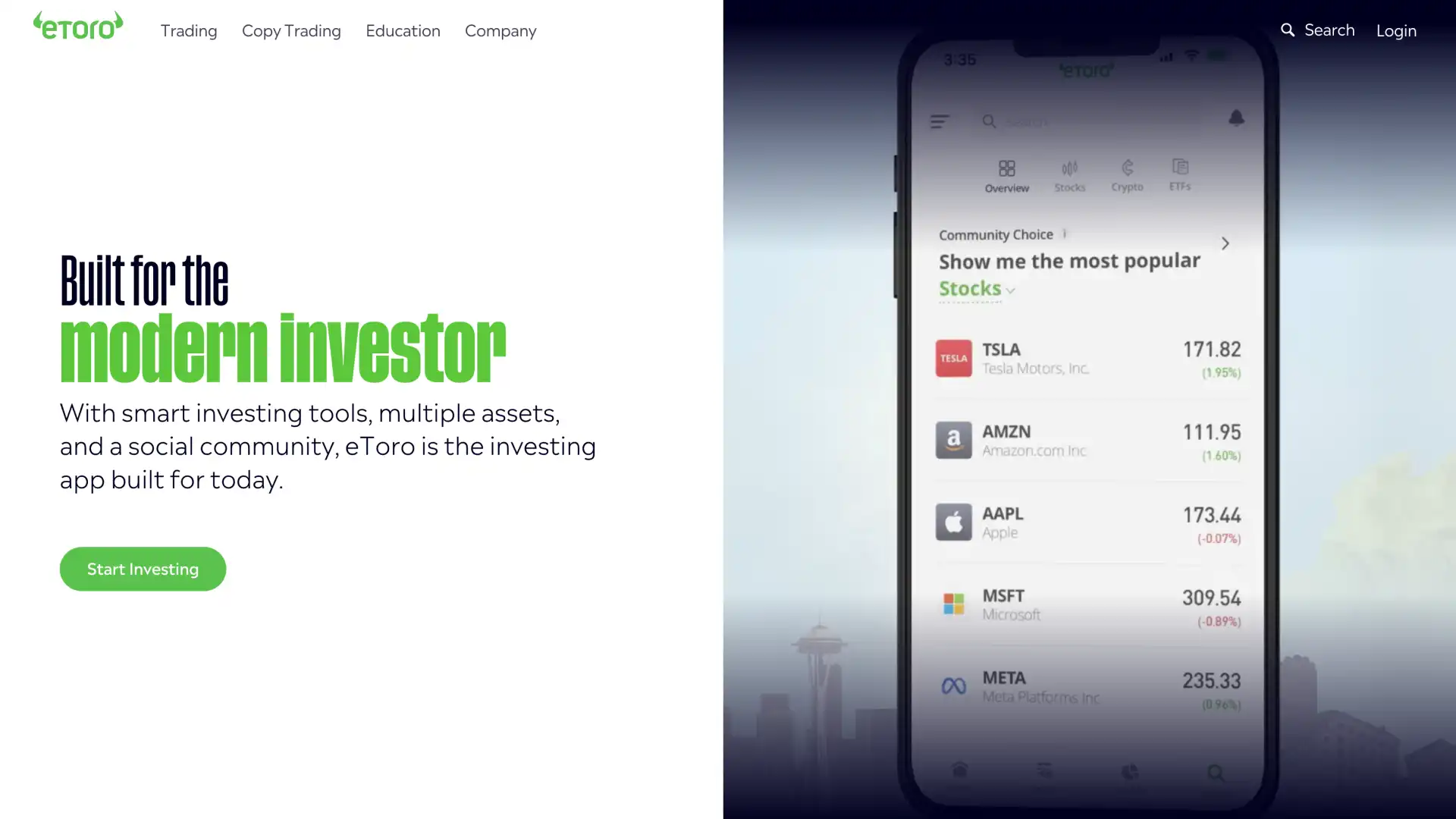
Overview: eToro was founded in 2007 and is headquartered in Israel. It is a social trading platform that allows users to copy the trades of successful traders.
Tradable coins: eToro offers trading for 120 cryptocurrencies, including Bitcoin, Ethereum, and Ripple.
Fees: eToro charges a spread of about 0.75% for cryptocurrency purchases and sales. Additionally, it charges withdrawal fees ranging from $5 to $25.
Pros:
- Unique social trading feature
- User-friendly interface
- Wide range of supported cryptocurrencies
Cons:
- High fees compared to some competitors
- Limited payment options
Visit eToro
6. Bitstamp Exchange Review
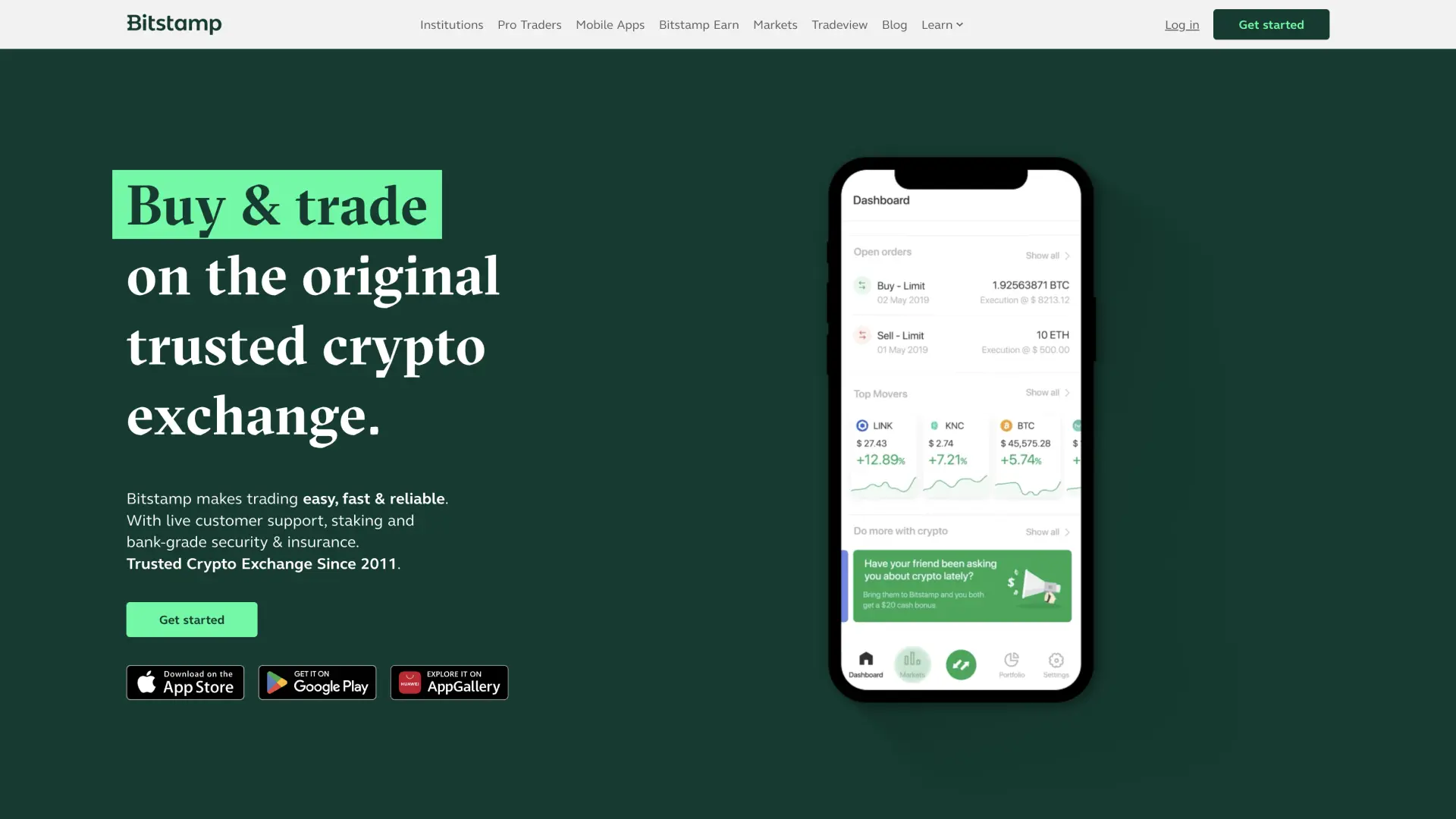
Overview: Bitstamp was founded in 2011 and is headquartered in Luxembourg. It is a centralized exchange that offers trading for a limited number of cryptocurrencies.
Tradable coins: Bitstamp offers trading for 10 cryptocurrencies, including Bitcoin, Ethereum, and Litecoin.
Fees: Bitstamp’s fees vary depending on the trading volume and currency pair. The fees range from 0.05% to 0.50% for makers and 0.25% to 0.50% for takers.
Pros:
- Low fees
- Strong security measures
- High liquidity
Cons:
- Limited number of supported cryptocurrencies
- Limited payment options
Visit Bitstamp
7. Gate.io Exchange Review
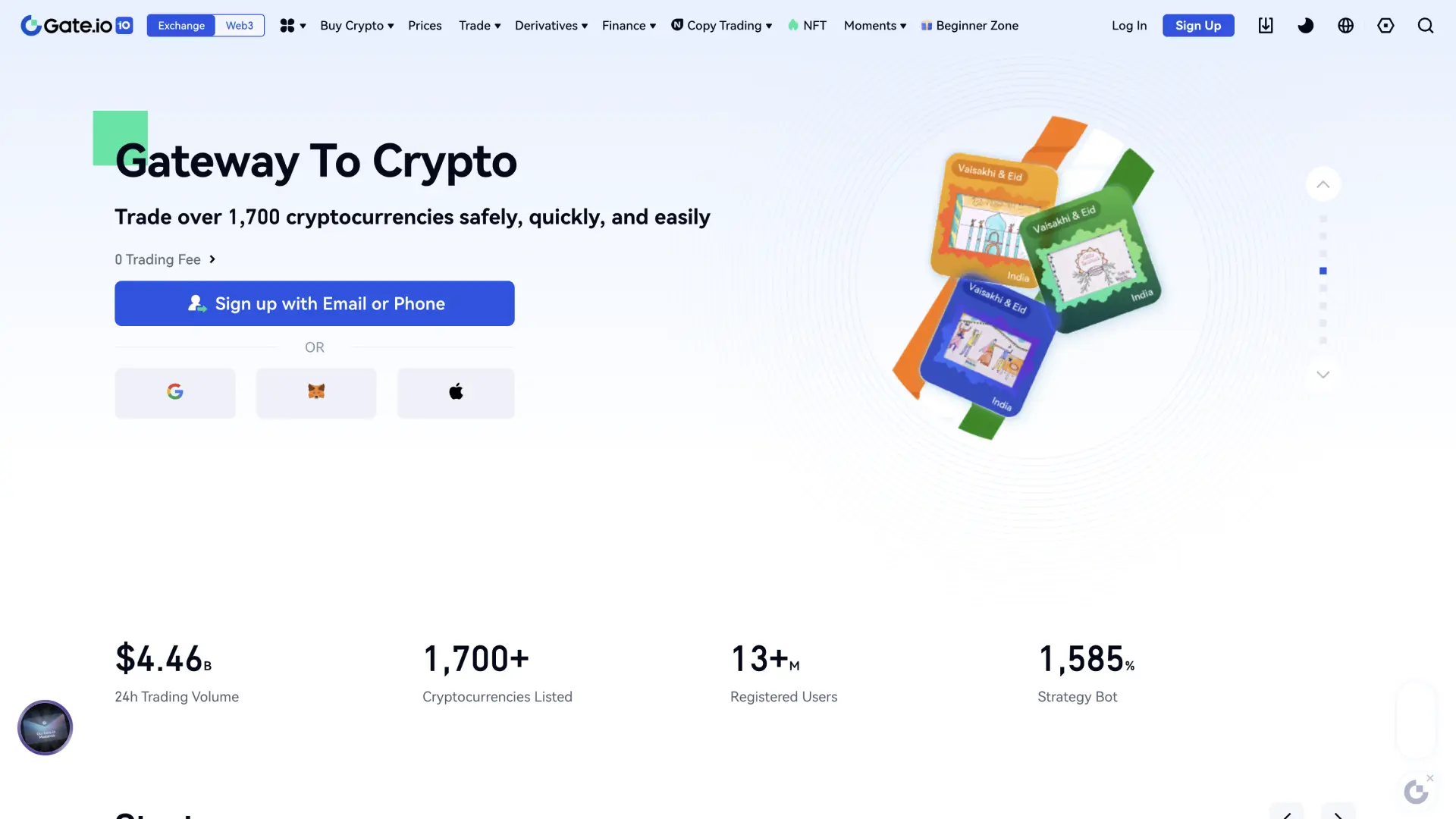
Overview: Gate.io was founded in 2017 and is headquartered in the Cayman Islands. It is a centralized exchange that offers trading for a wide range of cryptocurrencies, with a focus on altcoins.
Tradable coins: Gate.io offers trading for over 400 cryptocurrencies, including Bitcoin, Ethereum, and various altcoins.
Fees: Gate.io charges a flat trading fee of 0.20% for both makers and takers. There are no deposit fees, but withdrawal fees vary depending on the cryptocurrency.
Pros:
- Wide selection of altcoins
- User-friendly interface
- Competitive trading fees
Cons:
- Limited fiat currency support
- Limited payment options
Visit Gate.io
8. OKX Exchange Review
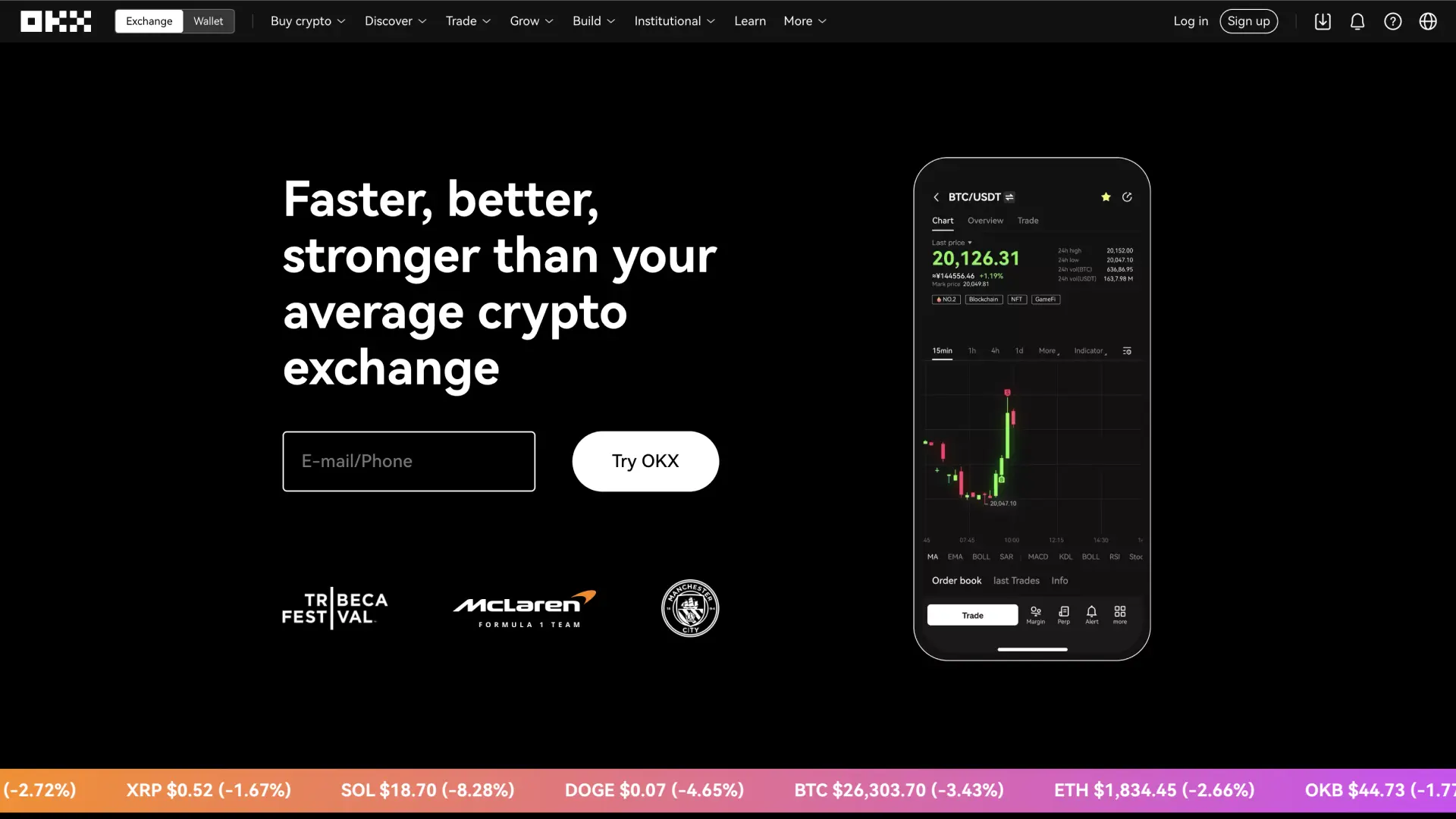
Overview: OKX was founded in 2017 and is headquartered in Malta. It is a centralized exchange that specializes in futures trading and offers a wide range of cryptocurrency derivatives.
Tradable coins: OKX offers trading for over 100 cryptocurrencies, including Bitcoin, Ethereum, and various altcoins.
Fees: OKX’s fees vary depending on the trading volume and type of contract. The fees range from 0.02% to 0.20% for makers and 0.05% to 0.20% for takers.
Pros:
- Specializes in futures trading
- Wide range of supported cryptocurrencies
- Advanced trading features
Cons:
- Not suitable for beginners
- Limited fiat currency support
Visit OKX
9. CoinDCX Exchange Review

Overview: CoinDCX was founded in 2018 and is headquartered in Mumbai, India. It is a centralized exchange that primarily caters to the Indian market, offering a range of services tailored to Indian users.
Tradable coins: CoinDCX offers trading for over 200 cryptocurrencies, including Bitcoin, Ethereum, and various altcoins.
Fees: CoinDCX charges a flat trading fee of 0.10% for both makers and takers. There are no deposit fees, but withdrawal fees vary depending on the cryptocurrency.
Pros:
- Tailored services for Indian users
- Wide range of supported cryptocurrencies
- Competitive trading fees
Cons:
- Limited global availability
- Limited payment options
Visit CoinDCX
10. Crypto.com Exchange Review

Overview: Crypto.com was founded in 2016 and is headquartered in Hong Kong. It is a centralized exchange that offers trading for over 250 cryptocurrencies, with a focus on altcoins.
Tradable coins: Crypto.com offers trading for over 250 cryptocurrencies, including Bitcoin, Ethereum, and various altcoins.
Fees: Crypto.com’s fees vary depending on the trading volume and type of transaction. The fees range from 0.04% to 0.20% for makers and 0.10% to 0.20% for takers.
Pros:
- Wide selection of altcoins
- High liquidity
- User-friendly interface
Cons:
- Limited fiat currency support
- Limited payment options
Visit Crypto.com
You May Also Like
-
Best Crypto & Bitcoin Exchanges
-
Best Crypto & Bitcoin Exchanges in the USA
-
Best Tether Exchanges
-
Best USD Coin Exchanges
-
Best Crypto & Bitcoin Exchanges Canada
-
The Best Crypto Exchanges in the UK
-
Best Binance Coin Exchanges
-
Best XRP Exchanges
-
Best Cardano Exchanges
-
Best Litecoin Exchanges
-
Best Tron Exchanges
-
Best Polygon Exchanges
-
Best Avalanche Exchanges
-
Best Shiba Inu Exchanges
-
Best Bitcoin And Crypto Exchanges in New York
- Show More

Disclaimer: Investing in cryptocurrencies carries significant risk. Values are highly volatile. Never invest more than you can afford to lose. This site does not provide financial advice. Act based on your own research and consult with a financial professional before making decisions. Don’t invest unless you’re prepared to lose all the money you invest.
Factors to Consider When Selecting the Best Lowest Fee Crypto Exchanges in California
Are you eager to dive into the exciting world of crypto-gambling? The first step is to find a reliable and secure California-based Bitcoin and crypto exchange. With so many options out there, it can be overwhelming to choose the right one. But don’t worry; I’ll walk you through the key factors to consider when you’re looking for the best crypto trading platform in California.
Licensing and geo-restrictions in California
Let’s first address the elephant in the room. Are crypto exchanges legal in California? If so, which are the licensed crypto & Bitcoin exchanges in this state? The answer to this is quite simple: in a nutshell, crypto gambling and trading apps are permitted in California.
In 2014, the California government legalized the use of digital currency to purchase goods and transact payments. This means that cryptocurrency exchanges operate legally in California. That said, these crypto trading apps must acquire a license from the Financial Crimes Enforcement Network (FinCEN).
To save you time, we have compiled the top Bitcoin and crypto exchanges you can use in California that are licensed by FINRA and FinCEN. With these sites, you can trade with peace of mind with the assurance that your interests are safeguarded.
Variety of supported cryptocurrencies and trading pairs you can find in California
When you choose a cryptocurrency exchange in California, ensure it supports your preferred cryptocurrencies. Our top crypto exchange features over 500 currencies. You can trade major coins like Bitcoin, Ethereum, and Litecoin. These crypto-trading apps also feature lesser-known coins like Solana and Polygon.
Also, a site with a diverse range of cryptocurrencies attracts more traders, increasing market liquidity. Aside from this, access to many trading pairs allows you to spread your risk by investing in several coins.
Liquidity of the Bitcoin exchange in California
The best California-based crypto exchanges have high liquidity. This means that there is a high volume of orders. Established exchanges tend to have better liquidity compared to newer ones. This is because they attract a bigger user base with large asset holdings. Added to this, high liquidity offers flexibility in executing trades at any time.
This is especially important during periods of high volatility in the crypto market, since your coin will not face drastic price drop. On the other hand, an exchange with lower liquidity puts you at risk of losses. This is because of the severe price changes in the market.
Consideration of transaction fees for California-based crypto exchanges
It is no secret that exchanges use transaction fees to generate revenue. Common fees include trading fees, deposit and withdrawal fees, and account fees. However, a reliable crypto exchange features considerable fees and no hidden charges.
The best Bitcoin exchanges in California often offer digital tokens to users. With these tokens, you get to enjoy discounted trading fees. For instance, Binance users can transact at lower fees using Binance Coin (BNB).
Security measures
The crypto industry tends to suffer cyber threats. This is why you should be vigilant about your personal and financial data safety. The recommended sites in this guide feature robust security measures like the use of two-factor authentication to enhance the safety of your account.
For added safety, you can opt to store your crypto in cold storage. With this option, your digital coins will be stored offline, where they are safe from hackers.
Educational resources for cryptocurrency California-based holders can use
The best crypto trading platforms offer a wealth of resources to meet the diverse needs of crypto users. Here’s a list of the educational materials you might find.
The basics of cryptocurrency
These resources cover the basic principles of cryptocurrencies. You get to learn the fundamentals of blockchain technology and popular digital coins. This information is mainly found in blogs, guides, and video tutorials.
Trading techniques
Trading strategies and tips are informative resources for crypto traders. These learning materials will help you understand the various trading techniques. Some guides also have details about risk management strategies.
Market analysis
As you explore the crypto trading world, it is essential to broaden your crypto knowledge. Market analysis resources will help you learn about market trends and price movements.
Also, the best crypto exchanges you can use in California feature relevant podcasts and video content. My top pick for a crypto market analysis podcast is ‘Unchained’ by Laura Shin. ‘The Pomp Podcast’ by Anthony Pompliano is another great choice.
Supported California-rooted banking methods to buy crypto
The most ideal Bitcoin and crypto exchanges in California support many payment methods. Some of the top banking methods include e-Wallets like PayPal. E-Wallets are preferred due to their speedy transactions and low fees. Some exchanges also accept bank cards like Visa and Mastercard.
E-Wallets
E-Wallets are highly preferred banking options due to their widespread acceptance. PayPal and Skrill are the e-Wallets of choice on the top BTC exchanges. They are also renowned for their stringent security measures. Moreover, they offer privacy and anonymity, as you won’t have to share your banking details. Other notable e-wallets include MuchBetter, Jeton, and Neteller.
Credit/debit cards
Visa and Mastercard credit and debit cards are easy and convenient ways to fund cryptocurrency exchanges. These banking methods use the advanced 128-bit SSL. Thus, you can link your card with the assurance of secure transactions.
Bank transfers
Some users prefer the traditional bank transfer method, which many crypto exchanges support. If credit cards are not supported in your country, bank transfer is an excellent option. Luckily, transferring funds from your bank to your exchange account is a straightforward process.
Digital tokens
Digital tokens are changing how we fund crypto exchanges. These tokens leverage blockchain technology to ensure safe, transparent transactions and minimize intermediaries. In return, you’ll receive utility tokens, which you can use for trading, paying fees, or accessing exclusive services.
Types of Bitcoin Exchanges in California
There are three main types of California-rooted Bitcoin exchanges. They include centralized exchanges (CEX), decentralized exchanges (DEX), and hybrid exchanges (HEX). Each type caters to unique preferences. In this section, we explore the features of each exchange.
Centralized Exchanges (CEX)
A centralized crypto exchange is an excellent option if you’re just starting out. Think of it as a platform like a regular stock exchange, where you can buy or sell different digital coins.
In a CEX, there’s a central authority or company that manages and controls the exchange. This means they act as the go-between between buyers and sellers. They also ensure that transactions are secure and run smoothly.
Another key responsibility of the middleman is managing the order books. This is essentially lists of all the buy and sell orders from crypto traders.
For example, if you want to buy some Bitcoin, you only need to place a buy order on the exchange. The platform will then find a match and execute the trade if someone is willing to sell at your desired price.
One of the main perks of starting with a CEX, especially if you’re new to the crypto world, is the user-friendly websites. These platforms are designed to make it easy for beginners to explore and trade cryptocurrencies.
However, because a central authority is involved, a certain level of trust is required. You need to have trust that the exchange will handle your funds responsibly and keep them safe and secure.
While centralized exchanges provide convenience and safety, there are also some risks involved. For instance, if the trading site experiences a security breach, there’s a possibility of losing your funds.
That’s why we highly recommend that you only sign up with the best crypto apps. To make it easier for you, we’ve compiled a list of the top crypto trading platforms in the section above.
Advantages of centralized exchanges
- Liquidity: Centralized exchanges have many users. Hence, they have high trading volumes, which boost liquidity in the market
- User-friendly interface: CEXs have sleek and easy-to-use websites. Some available features include price charts, order books, and trade history
- Security measures: Centralized exchanges have solid security measures. They have installed encryption and two-factor authentication (2FA). You will also find cold storage, which safeguards your funds and personal information
- Customer support: Our top CEXs offer 24/7 customer support services. As such, you are guaranteed to get prompt help at any time of day
Limitations of centralized exchanges
- Lack of control: Centralized exchanges operate under a single entity. This means you have to trust the company with your funds and personal information. If the exchange faces issues, you will likely have limited access to your assets
- Centralized points of failure: Since a centralized exchange functions under a single entity, it is vulnerable to hacking attempts. Even technical failures can lead to loss of funds. Extreme issues can also disrupt all trading activities
- Privacy concerns: While creating an account, centralized exchanges ask for personal details. This provision raises privacy concerns, as third parties can access your data
- Regulatory risks: Centralized exchanges must operate within regulatory frameworks. For instance, they have to adhere to government rules and regulations. Unfortunately, these regulations can lead to restrictions on users from certain jurisdictions
Decentralized exchanges (DEX)
Imagine a DEX as a bustling open marketplace, just like your local flea market or farmer’s market. The unique thing about DEXs is that there’s no middleman calling the shots; it’s all about empowering the community.
In these decentralized exchanges, transactions happen on a peer-to-peer basis, meaning you get to trade directly with other crypto users. This is made possible thanks to the wonders of smart contracts. Think of smart contracts as self-executing agreements that automatically handle your trades. They’re like trustworthy market stall owners who ensure everything is fair and secure without any need for a middleman.
DEXs have a few aces up their sleeves compared to their centralized counterparts. For starters, transparency is their middle name! Since DEXs aren’t controlled by a single authority, everything is out in the open for everyone to see. No shady business here!
Privacy is also a top priority. When you register on a DEX, you won’t have to provide your personal information. No need to share more than you’re comfortable with – it’s all about respecting your privacy.
Now, let’s face the elephant in the room: DEXs can be a bit more complex than those familiar centralized exchanges (CEXs). Why, you ask? Well, you’re the master of your own destiny here! To hop on the DEX train, you’ll need to bring along your trusty digital wallet to store your assets.
Advantages of decentralized exchanges
- Control and security: DEXs give you greater control over your funds. For example, you don’t have to deposit money into a centralized platform. This reduces the risk of losing funds due to hacking or fraud
- Privacy: Decentralized exchanges focus on user privacy. They do not ask for personal information or identity verification
- Reduced counterparty risks: Trades on DEXs occur between users through smart contracts. Thus, they drop the need for a third party. This aspect reduces counterparty risk. It also increases trust in the trading process
Disadvantages of decentralized exchanges
- Less user-friendly experience: Compared to centralized exchanges, DEXs present a steeper learning curve, particularly for beginners. The interface can be quite intimidating, and you might need some time to familiarize yourself with the platform
- Less liquidity: In most cases, there are fewer participants trading certain cryptocurrencies. As a result, decentralized exchanges may experience lower liquidity. Thus, the execution of trades at desired prices and volumes becomes challenging
- Slower transaction speed: DEXs rely on consensus mechanisms to conclude trades. Understandably, this can result in slower transaction times compared to centralized exchanges
- Limited trading options: Decentralized exchanges may offer a narrower range of available cryptocurrencies for trading. As you'd expect, this limits the number of trading pairs you can choose from
Hybrid Exchanges (HEX)
Hybrid exchanges offer something unique - a perfect blend of both centralized and decentralized models.
Picture this: a platform that combines the ease and user-friendliness of CEXs with the perks of DEXs. Sounds exciting, right? Well, that's exactly what hybrid exchanges bring to the table.
Now, let me break it down for you. When you opt for a hybrid exchange, you'll still have to register an account and provide your personal information. But unlike CEXs, the exchange utilizes some decentralized technology, such as blockchain, to add an extra layer of transparency and security.
It's the best of both worlds, really! The exchange takes care of all the heavy lifting, including the transaction processing and security measures. At the same time, though, it harnesses the power of decentralization to offer improved transparency and enhanced security for your peace of mind.
Now, you might be wondering, "Why should I consider a hybrid exchange?" Well, hybrid exchanges strike the perfect balance between trust and control. It's like having your cake and eating it too!
I personally recommend hybrid exchanges to both beginners and expert users. Why? Because these sites are incredibly user-friendly, making it a breeze for newcomers to navigate the crypto waters. And for the seasoned traders out there, the added security and transparency are a huge bonus.
Advantages of hybrid exchanges
- User-friendly apps: Hybrid exchanges have simple and user-friendly websites. Hence, they are suitable for beginners and experienced traders
- Faster transactions: These exchanges process your deposits and withdrawals faster compared to DEXs
- Liquidity: Hybrid exchanges provide higher liquidity because they attract a larger user base. Trading Bitcoin or any other coin at competitive rates becomes even easier
- Excellent customer support: Top BTC exchanges offer reliable customer support services available 24/7
Disadvantages of hybrid exchanges
- Centralization risks: Hybrid exchanges have some centralization aspects. This introduces a degree of risk. For example, you could lose your funds if there are security breaches or system failures. You should therefore always select a reputable and secure hybrid exchange
- Trust requirements: With these exchanges, you still need to trust the operator. This is because the trading site may still have some level of reliance on a central authority
- Limited control: In a Hybrid exchange, you don’t have full control of your funds
My Recommendation: Test Several Exchanges
If you are considering trading crypto, try several exchanges and have your funds distributed around several trading apps. Why? Continue reading to find out.
Familiarity with different interfaces
Using different crypto exchanges gives you a chance to explore different interface designs. Each exchange has a unique structure and protocol. As a result, you are likely to find one that meets your preference.
Diversification of investments
Added to this, investing in many exchanges enables you to diversify your investments across different platforms. This strategy ensures that you are not reliant on a single exchange. If one site faces issues, your funds in other exchanges will be safe. This approach provides you with different options to safeguard your investments.
Mitigation of risk in case of compromised exchanges
Exchanges can sometimes face security breaches or other operational problems. If you store all your cryptos in a single exchange, you risk losing them. That is why we emphasize that you spread your investments across many exchanges.
How Does a Bitcoin Exchange Function?
A Bitcoin crypto exchange operates like a digital marketplace. Here, you can sell or buy BTC. The first step is to register on the exchange platform and fund your account. Top crypto exchanges allow deposits by cryptocurrencies or fiat currencies. Whenever you complete a trade, the system adjusts your account balance accordingly.
Using an exchange: a step-by-step guide
Navigating a cryptocurrency exchange can be intimidating at first, but the process is very straightforward. Below is a guide on how to use a BTC exchange:
Account registration
Visit the exchange’s website and create an account. The registration process is simple. You only need to provide some basic information, including email, username, and password.
Verification
After registration, you will need to verify your account. This verification process involves confirming your email address. The exchange may also ask that you provide identification documents.
Account funding
At this stage, you can deposit funds into your exchange account. You can choose to deposit using fiat currency or your preferred crypto.
Trading interface
Explore the trading interface provided by the exchange. This interface presents various cryptocurrencies, including Bitcoin. You can also see the respective prices of various trading pairs. From here, select the specific cryptocurrency you wish to buy or sell.
A Comprehensive Guide on How to Buy Bitcoin
To buy Bitcoin through a reputable exchange, follow the steps below:
Step 1: Select a cryptocurrency exchange
Start by choosing a reliable exchange that supports Bitcoin trading. We have created a list of the top BTC trading platforms to save you time and effort. Identify an exchange that prioritizes security. It should also have a user-friendly interface with reasonable fees.
Step 2: Sign up
After identifying the preferred Bitcoin exchange, go ahead and create an account. You’ll need to provide your email address and set a password. Some exchanges may take you through the Know Your Customer (KYC) process for verification. This involves submitting identification documents.
Step 3: Secure your account
After setting up your account, focus on its security. Enable two-factor authentication (2FA) using an authenticator app or SMS verification. This extra layer of protection helps safeguard your account from unauthorized access.
Step 4: Deposit funds
To buy Bitcoin, you need to deposit funds into your exchange account. Most exchanges support deposits in fiat currencies like USD, EUR, etc. Also, you can use other cryptocurrencies, such as Ethereum (ETH) or Bitcoin (BTC). Choose your preferred payment method and specify the amount to deposit. A reliable BTC exchange offers various banking options, including e-wallets and credit cards.
Step 5: Place a buy order
Explore the available Bitcoin trading pairs and choose the type of order you want to place. Market orders are the best, because you can use them at the current market price. You can also opt for limit orders. These options allow you to specify a desired purchasing price.
Step 6: Specify the quantity and review the order
Enter the quantity of Bitcoin you want to buy. Make sure it aligns with the available funds in your account. Next, review the details of your order. Look out for the total cost, applicable fees, and any other parameters you have set.
Step 7: Execute the order
Once you verify the order details, execute the buy order. The exchange will match your order with a corresponding sell order on the site. After filling the order, the purchased Bitcoin coins will reflect in your account.
Step 8: Secure your Bitcoin
After the transaction, transfer your Bitcoin from the exchange to your crypto wallet. This step enhances the security of your digital assets. It also reduces the risk of loss if the exchange suffers security issues.
So You’ve Bought Bitcoin; What Should You Do Next?
After you’ve acquired your Bitcoin, you can use it in many ways. Let’s explore some ideas on how to make the most of your crypto investment.
Ensuring cryptocurrency security
When dealing with cryptocurrency, security should be a top priority. The following measures will help you to safeguard your digital assets:
Limit Exchange Exposure
Avoid keeping large amounts of Bitcoin on exchanges for too long. Exchanges are vulnerable to cyber-attacks, which puts your assets at risk. As an alternative, transfer your Bitcoin to a personal wallet.
Cold Wallets
Consider using cold wallets like hardware or paper wallets. Opt-in for a non-custodial wallet. They enhance your security because the private keys belong to you. Use them to store your Bitcoin offline. This option reduces the risk of unauthorized access.
Different ways to use Bitcoin
If you’re wondering how to use your Bitcoin, here are some options to consider:
Holding
Holding means keeping your Bitcoin for a longer period. This strategy helps you to wait for the value to increase. It could be an attractive investment strategy with significant profits.
Purchases
Many online and offline merchants accept cryptocurrencies as a form of payment. You can use your BTC to pay for goods and services.
Investments
Bitcoin can serve as an investment asset, like stocks. You can venture into opportunities like participating in (DeFi) protocols. If you decide to do this, though, make sure you research the potential risks well before investing your Bitcoin.
Betting and Gaming
Many crypto sports betting sites allow you to fund your account using Bitcoin. The platforms enable you to bet on sports events like football or basketball. You can also use the coins to play casino games, such as slots and table games.
Trading
Bitcoin trading involves buying and selling Bitcoin following a specific trading strategy and chart patterns. This is an excellent option if you are looking to generate short-term profits. Although BTC trading can be profitable, it requires technical knowledge to manage risks and understand the market.
Diversification strategies
Diversifying your cryptocurrency portfolio is also important. This helps you effectively manage risk and maximize investment opportunities. Below are some of the diversification strategies you can consider:
Hold many coins
Aim to hold a diversified portfolio consisting of at least five different cryptocurrencies. This strategy helps reduce the impact of underperforming coins. On the other hand, it maximizes the gains from high-performing ones.
Different categories
Diversify across various crypto categories. You can do this by selecting coins with unique use cases, technological focuses, or market capitalizations. This strategy helps balance your exposure to potential market volatility.
Final Word
Embarking on the journey of crypto trading in California requires a thoughtful approach. Key factors to consider when selecting the best lowest fee crypto exchanges in the state include licensing and geo-restrictions, supported cryptocurrencies, liquidity, transaction fees, security measures, educational resources, supported banking methods, and types of exchanges available.
Overall, the journey into crypto trading in California requires a cautious and diversified approach, considering multiple factors to ensure a safe, diverse, and rewarding experience.
Frequently Asked Questions
How do I know if an exchange is reputable and trustworthy?
To determine if an exchange is reputable, check its security measures. Make sure the exchange has strong measures to safeguard your funds and personal data. Look for features like two-factor authentication and a secure login process. The exchange should also have cold storage for digital assets.
How many types of crypto & Bitcoin exchanges are there in California?
There are three main types of exchanges that you can use in California; centralized, decentralized, and hybrid. Centralized exchanges are excellent for beginners. DEXs are popular among crypto traders since you have more control of your funds. On the other hand, hybrid exchanges combine the best aspects of CEXs and DEXs.

.png)